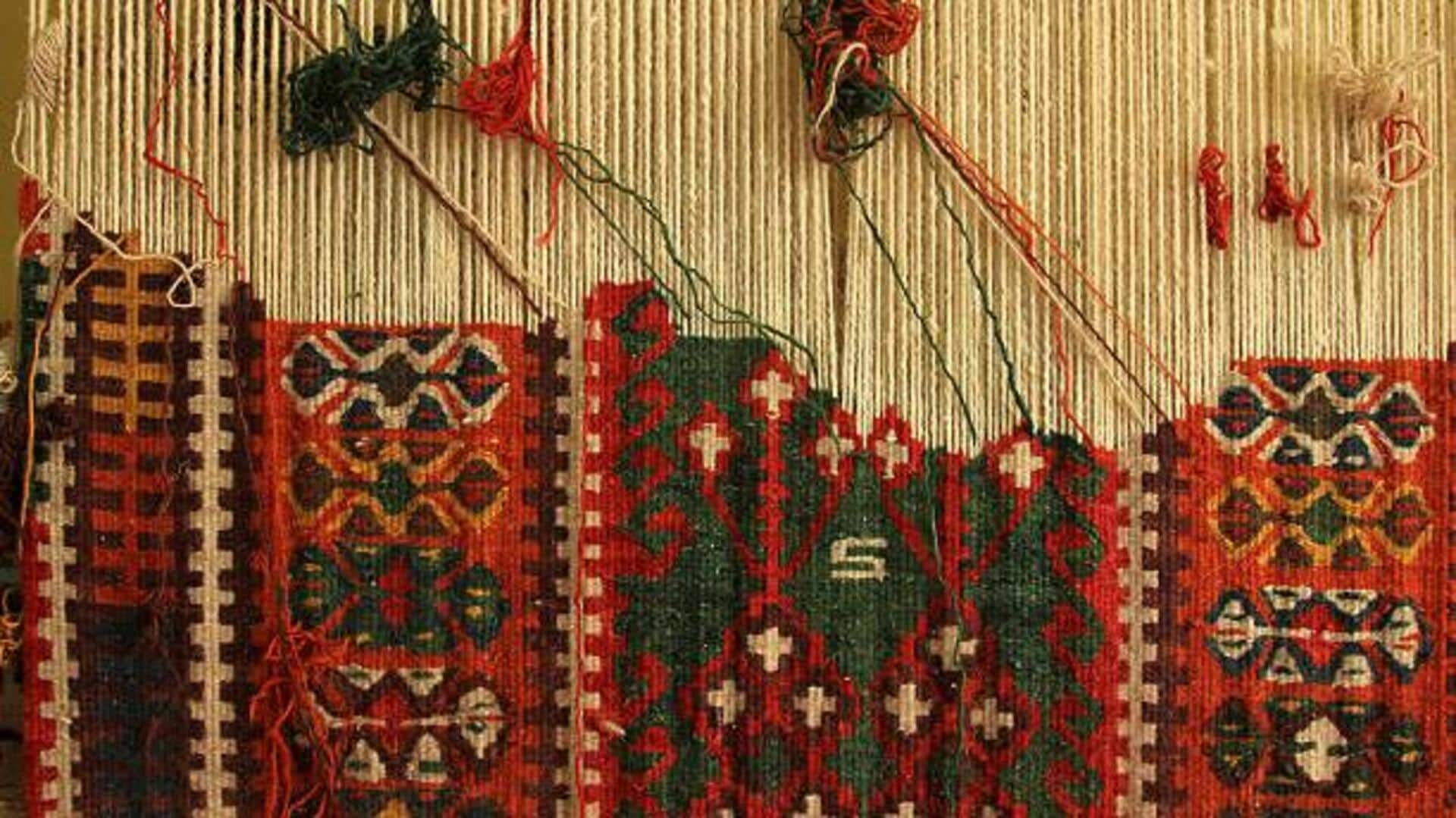
All about kilim weaving
What's the story
African kilims are famous for their vivid patterns and elaborate designs, showcasing the cultural richness of the continent. These handwoven beauties are made using age-old techniques, passed down generations. Learning these techniques not only keeps this art alive but also deepens appreciation for its cultural value. Here, we take a look at some of the important weaving techniques used to make authentic African kilims, giving you an idea of their uniqueness and craftsmanship.
Foundation
Warp and weft basics
The warp and weft technique is the basis of kilim weaving. The warp threads are placed vertically on a loom, whereas the weft threads are woven horizontally through them. This interlocking method creates a flat weave with no pile, setting kilims apart from other rugs. Mastering this basic technique is crucial to producing durable and visually-appealing textiles.
Coloration
Natural dyeing processes
Natural dyeing is an essential part of authentic African kilim making. Artisans use plant-based dyes to get bright colors that are not only eco-friendly but also long-lasting. Common sources are indigo plants for the blue hues and madder root for reds. The dyeing process needs precision to ensure that the color remains consistent across different batches, showcasing the skill of traditional kilim making.
Patterns
Geometric pattern design
Geometric patterns are a hallmark of African kilims, often symbolizing cultural stories or beliefs. Artisans meticulously plan these designs before weaving begins, ensuring symmetry and balance throughout the textile. Each pattern carries specific meanings or represents particular tribes or regions, adding layers of significance to each piece.
Detailing
Knotting techniques
While most kilims have flat weaves and no knots, some variations include knotting techniques to add more texture or detail. These knots can create raised patterns or borders, enhancing visual interest without compromising on the flatness that defines traditional kilims. Knowing these variations helps artisans play around with textures while remaining true to their roots.